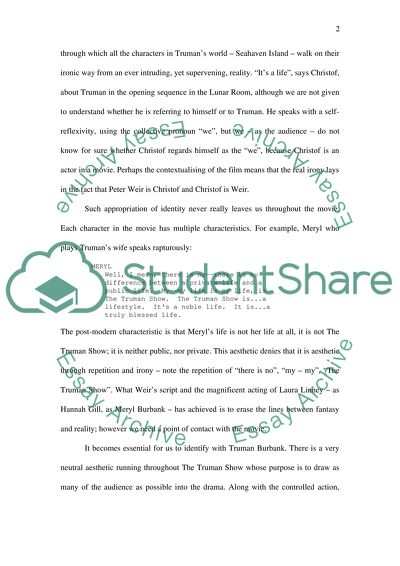Cite this document
(“Postmodern at The Truman Show Essay Example | Topics and Well Written Essays - 2250 words”, n.d.)
Postmodern at The Truman Show Essay Example | Topics and Well Written Essays - 2250 words. Retrieved from https://studentshare.org/miscellaneous/1504231-postmodern-at-the-truman-show
Postmodern at The Truman Show Essay Example | Topics and Well Written Essays - 2250 words. Retrieved from https://studentshare.org/miscellaneous/1504231-postmodern-at-the-truman-show
(Postmodern at The Truman Show Essay Example | Topics and Well Written Essays - 2250 Words)
Postmodern at The Truman Show Essay Example | Topics and Well Written Essays - 2250 Words. https://studentshare.org/miscellaneous/1504231-postmodern-at-the-truman-show.
Postmodern at The Truman Show Essay Example | Topics and Well Written Essays - 2250 Words. https://studentshare.org/miscellaneous/1504231-postmodern-at-the-truman-show.
“Postmodern at The Truman Show Essay Example | Topics and Well Written Essays - 2250 Words”, n.d. https://studentshare.org/miscellaneous/1504231-postmodern-at-the-truman-show.


